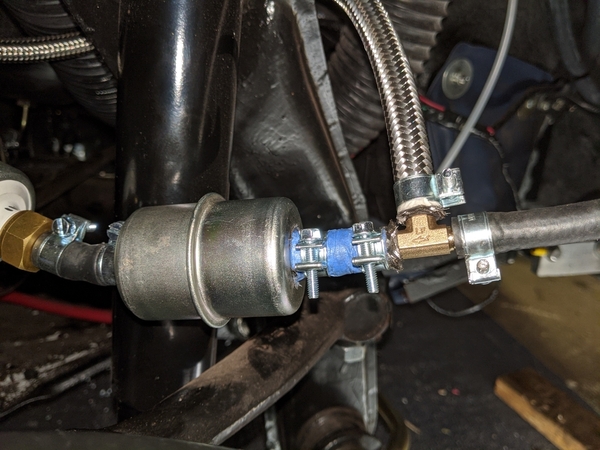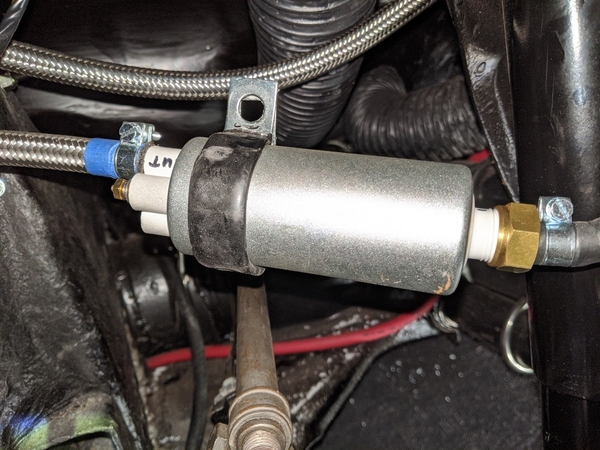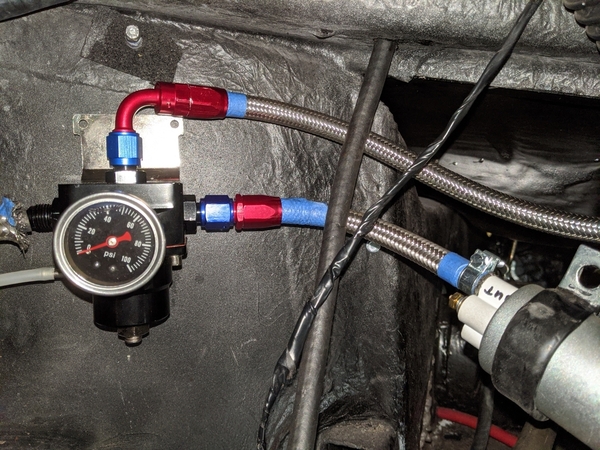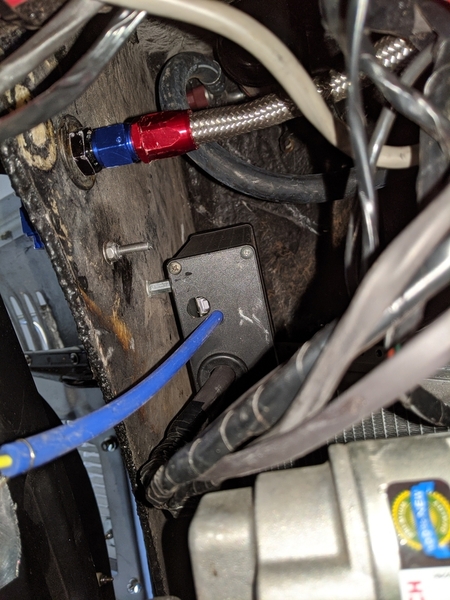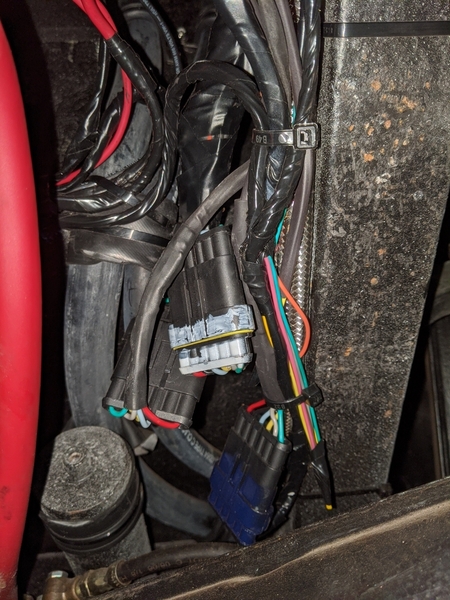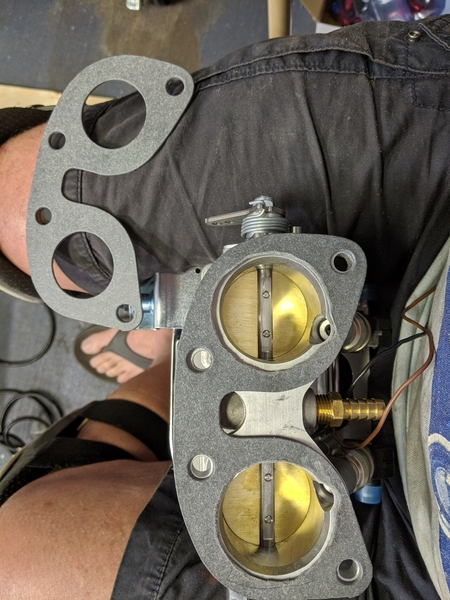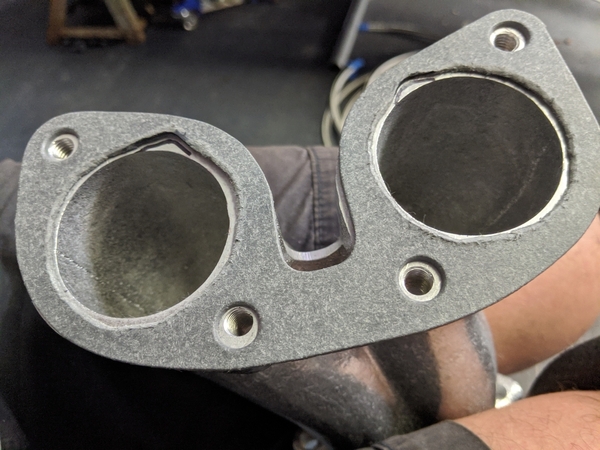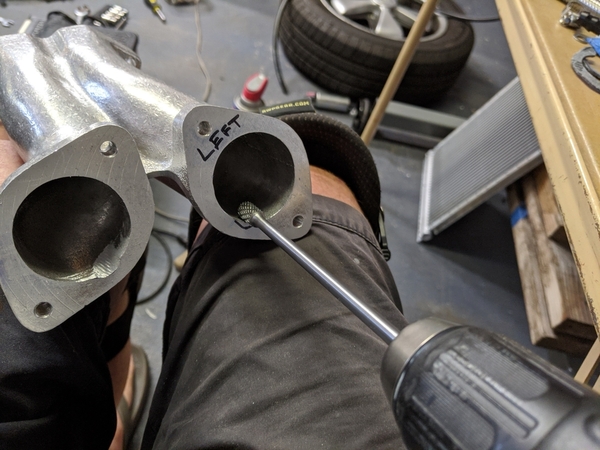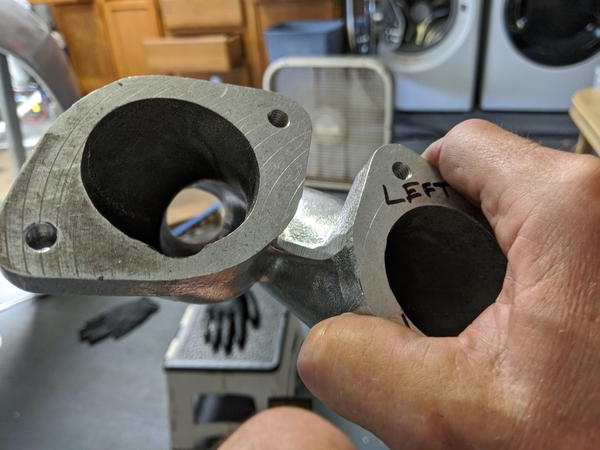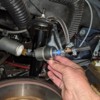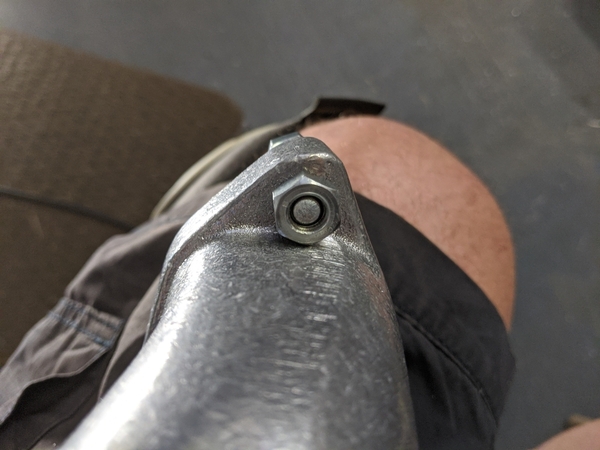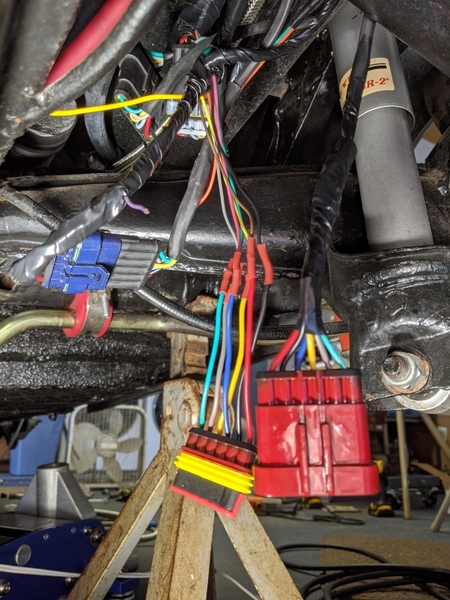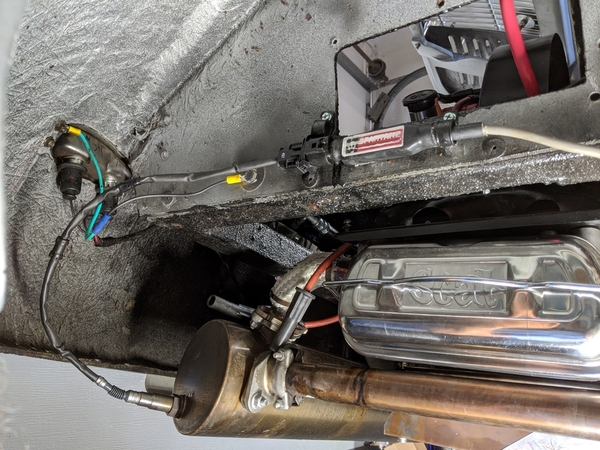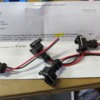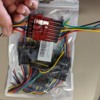Today's update: built out the fuel pump system from the gas tank to the engine bay; built both of the throttle body/manifold assemblies; tweaked the throttle bodies to work with the CB Performance manifolds; ported and gasket matched the manifolds to give clearance for the injector spray.
Here's the gas tank side. The tank feeds a brass T connected to the first gas filter and the fuel return fitting on the regulator. The first filter connects to a Powerco high pressure inline fuel pump (around $50 from Amazon). The pump feeds the pressure regulator which feeds the second gas filter. The second filter connects to an AN6 steel covered fuel line that runs to a firewall AN6 bulkhead T that provides 2 AN6 fittings in the engine bay.
Tank side
Short run to brass T then filter and pump
Brass T with fuel return from regulator
High pressure pump
Regulator
2nd filter and feed to the engine bay and vacuum line from manifolds to the pressure regulator
Gap between firewall and backseat. 6AN bulkhead fuel fitting and Speeduino mounted on back of the firewall. Blue hose is manifold vacuum
Speeduino connections broken out into 6 pin waterproof connectors
Splash guard installed underneath Speeduino
GM intake air temperature sensor tied to the stake inside passenger side air filter. Wires run through 3/16" hole filled with black RTV.
Gasket matched to throttle body
Gasket used as template for porting manifold for injector
Tomorrow I'll build out the fuel hoses in the engine bay and finish wiring up the injectors, throttle position sensor and intake air temperature sensor.



